Kinsale, Co. Cork
Kinsale Poor Law Union was formally declared on the 30th January 1839 and covered an area of 121 square miles. Its operation was overseen by an elected Board of Guardians, 21 in number, representing its 16 electoral divisions as listed below (figures in brackets indicate numbers of Guardians if more than one):
Co. Cork: Ballyfeard, Ballyfoyle, Ballymartle, Carrigaline, Cullen, East Courcies, West Courcies, Kilmanogue, Kilpatrick, Kinnure, Kinsale (6), Leofany, Liscleary, Nohoval, Templebredy, Tracton.
The Board also included 7 ex-officio Guardians, making a total of 28. The Guardians met each week on Wednesday.
The population falling within the Union at the 1831 census had been 41,929 with divisions ranging in size from Kinnure (population 1,081) to Kinsale itself (14,337).
The new Kinsale Union workhouse was erected in 1840-1 on a six-acre site half a mile to the north of Kinsale. Designed by the Poor Law Commissioners' architect George Wilkinson, the building was based on one of his standard plans to accommodate 500 inmates. Its construction cost £5,900 plus £1,000 for fittings etc. The workhouse was declared fit for the reception of paupers on 29th September 1841, and received its first admissions on 4th December. The site location and layout are shown on the 1902 OS map below.
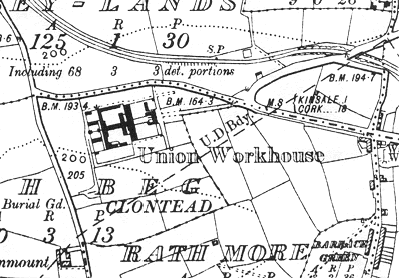
Kinsale workhouse site, 1902.
The buildings followed Wilkinson's typical layout. An entrance and administrative block at the east contained a porter's room and waiting room at the centre with the Guardians' board room on the first floor above.
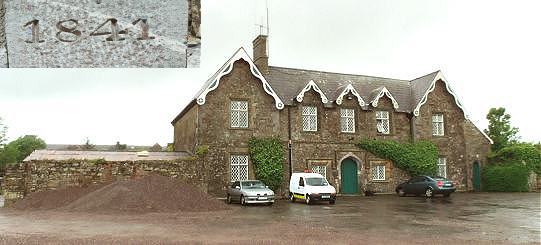
Kinsale entrance and administrative block from the east, 2002
© Peter Higginbotham.
The main accommodation block had the Master's quarters at the centre, with male and female wings to each side. At the rear, a range of single-storey utility rooms such as bakehouse and washhouse connected through to the infirmary and idiots' wards via a central spine containing the chapel and dining-hall.
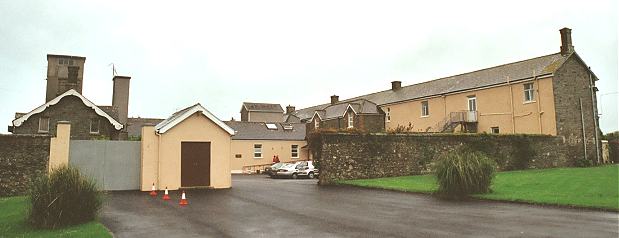
Kinsale general view from the north, 2002
© Peter Higginbotham.
A small mortuary was located at the west of the site.
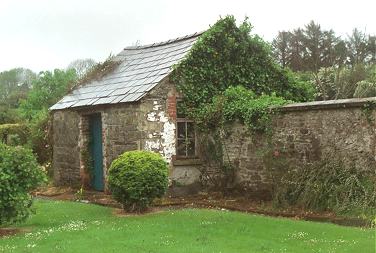
Kinsale mortuary from the north-east, 2002
© Peter Higginbotham.
During the famine in the mid-1840s, sheds were erected to accommodate 200 extra inmates. Some fever patients were sent to Carrigaline fever hospital while others were treated in sheds at the workhouse. The old town jail at Desmond Castle was also hired to accommodate a further 200 inmates.
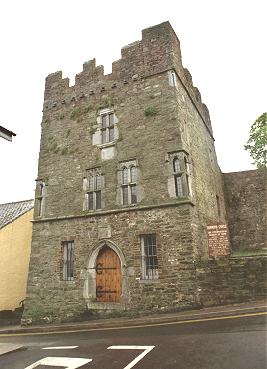
Desmond Castle, 2002
© Peter Higginbotham.
The workhouse had its own burial ground at the south-west of the site. A plaque commemorating victims of the famine has been placed at its entrance gate.
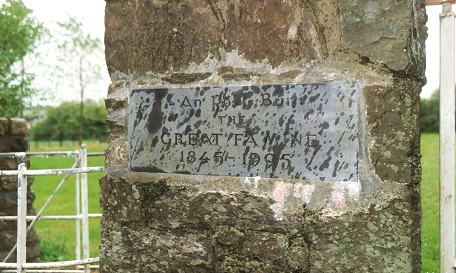
Kinsale burial ground, 2002
© Peter Higginbotham.
The former workhouse site is now partly used as a local council depot, and as the home of Kinsale Community Hospital.
Records
Note: many repositories impose a closure period of up to 100 years for records identifying individuals. Before travelling a long distance, always check that the records you want to consult will be available.
- Cork City and County Archives, 33a Great William O'Brien Street, Blackpool, Cork. Holdings include: Board of Guardian Minute Books (1839-1924); Master's Journal (1902-1908); Master's Report Book (1881-1887); Workhouse Farm Accounts (1899-1924); Indoor Relief Registers (1841-1917); Admission and Discharge Books (1845-1925); Pauper Discharge Books (1855-1884); Register of Fever Hospital Patients (1849-1850; Record of Death Book (1842-1899).
Bibliography
Links
- None.
Unless otherwise indicated, this page () is copyright Peter Higginbotham. Contents may not be reproduced without permission.


